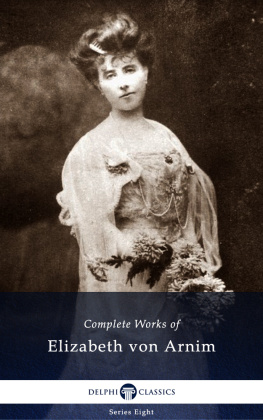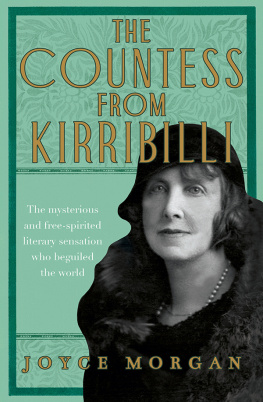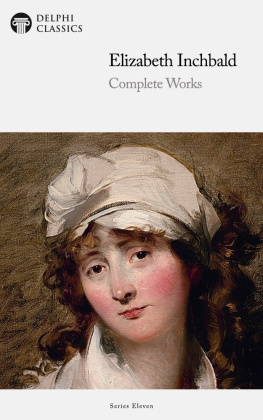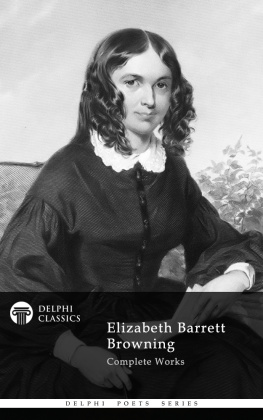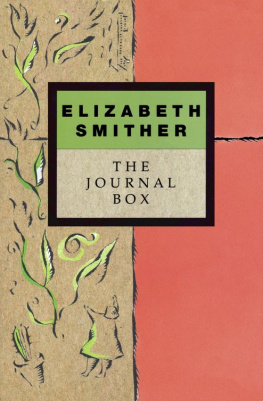Elizabeth von Arnim - Complete Works of Elizabeth von Arnim
Here you can read online Elizabeth von Arnim - Complete Works of Elizabeth von Arnim full text of the book (entire story) in english for free. Download pdf and epub, get meaning, cover and reviews about this ebook. year: 2017, publisher: Delphi Classics, genre: Art. Description of the work, (preface) as well as reviews are available. Best literature library LitArk.com created for fans of good reading and offers a wide selection of genres:
Romance novel
Science fiction
Adventure
Detective
Science
History
Home and family
Prose
Art
Politics
Computer
Non-fiction
Religion
Business
Children
Humor
Choose a favorite category and find really read worthwhile books. Enjoy immersion in the world of imagination, feel the emotions of the characters or learn something new for yourself, make an fascinating discovery.
- Book:Complete Works of Elizabeth von Arnim
- Author:
- Publisher:Delphi Classics
- Genre:
- Year:2017
- Rating:5 / 5
- Favourites:Add to favourites
- Your mark:
- 100
- 1
- 2
- 3
- 4
- 5
Complete Works of Elizabeth von Arnim: summary, description and annotation
We offer to read an annotation, description, summary or preface (depends on what the author of the book "Complete Works of Elizabeth von Arnim" wrote himself). If you haven't found the necessary information about the book — write in the comments, we will try to find it.
Complete Works of Elizabeth von Arnim — read online for free the complete book (whole text) full work
Below is the text of the book, divided by pages. System saving the place of the last page read, allows you to conveniently read the book "Complete Works of Elizabeth von Arnim" online for free, without having to search again every time where you left off. Put a bookmark, and you can go to the page where you finished reading at any time.
Font size:
Interval:
Bookmark:

The Complete Works of
ELIZABETH VON ARNIM
(1866-1941)

Contents

Delphi Classics 2017
Version 1

The Complete Works of
ELIZABETH VON ARNIM

By Delphi Classics, 2017
with introductions by Gill Rossini
www.gillrossini.com
Complete Works of Elizabeth von Arnim
First published in the United Kingdom in 2017 by Delphi Classics.
Delphi Classics, 2017.
All rights reserved. No part of this publication may be reproduced, stored in a retrieval system, or transmitted, in any form or by any means, without the prior permission in writing of the publisher, nor be otherwise circulated in any form other than that in which it is published.
ISBN: 978 1 78656 086 5
Delphi Classics
is an imprint of
Delphi Publishing Ltd
Hastings, East Sussex
United Kingdom
Contact: sales@delphiclassics.com
www.delphiclassics.com
Parts Edition Now Available!

Love reading Elizabeth von Arnim ?
Did you know you can now purchase the Delphi Classics Parts Edition of this author and enjoy all the novels, plays, non-fiction books and other works as individual eBooks? Now, you can select and read individual novels etc. and know precisely where you are in an eBook. You will also be able to manage space better on your eReading devices.

The Parts Edition is only available direct from the Delphi Classics website.
For more information about this exciting new format and to try free Parts Edition downloads , please visit this link .
Interested in Edwardian literature?

Delphi Classics is proud to present comprehensive editions of these important Edwardian era authors.
Explore Edwardians

The Kirribilli peninsula, including Sydney Harbour, New South Wales Elizabeth von Arnims birthplace

Yacht racing off Kirribilli Point, c. 1900

WITH TWELVE PHOTOGRAVURE ILLUSTRATIONS FROM PHOTOGRAPHS
First published in both America and Britain in 1898 by Macmillan, this book sometimes described as imaginative autobiography and which today might also be seen as creative non fiction, includes many parallels with the authors life, though this must not be taken literally. The writer E. M. Forster, who was tutor to von Arnims children at the time, declared he had never seen a garden such as the one in described in the book, at the seventeenth century von Arnim schloss, Nassenheide, in Pomerania (it was more of a wooded glade than a flower garden, according to Hugh Walpole, who succeeded Forster in the role). The property in question was where the author and her first husband, Count Henning von Arnim-Schlagenthin, spent their first years together. This book also established the pen name used by the author for most of her publications her real name was Mary Annette, but all her published works are given the name of Elizabeth. The accepted reason for this change of name seems to be her need to protect her aristocratic husbands good name from the demeaning commercialism of a working wife.
For a first novel it was extremely popular, especially in Britain and Germany in the early years of the twentieth century, earning von Arnim 10,000 (over a million pounds in todays money), which made her financially independent. The author is now receiving a renewed attention from literary scholars, who have added her to the category of middlebrow writers deserving of study.
The story is presented in diary format and opens with lyrical descriptions of the house, gardens and surroundings of Nassenheide My garden is surrounded by cornfields and meadows and beyond are great stretches of sandy heath and pine forests the forests are beautiful in their lofty, pink-stemmed vastness, far overhead the crowns of softest gray-green and underfoot a bright green wortleberry carpetIn the middle of this plain is the oasis of birdcherries and greenery where I spend my happy days and in the middle of the oasis is the gray stone house with many gables. In reality, the garden had not been tended for a quarter of a century, even though the main character and her husband have been married for five years; both Elizabeths, the author and the character of the narrative, resolved to bring enough order to the overgrown grounds with dandelions up to the very door to make it into a pleasant place to spend summer days.
The three children in the story are referred to by their month of birth April, May and June; there are some charming vignettes about the children that will either appeal to the reader as pleasingly of their time, or they will grate as being mawkish and unnecessary. The flowers that grow abundantly in the garden are also used to decorate the house, as the photographic illustrations show.
In this first published work, von Arnim displays a joie de vivre that has been likened to the lightness of touch and the emphasis on an elysian focus of some eighteenth-century writings and paintings (think of The Swing by Jean-Honore Fragonard and the fashion for hameau model hamlets - such as Marie Antoinettes Hameau de la Reine at the Palace of Versailles). The Elizabeth of the narrative has some opinions that may leave the modern reader somewhat taken aback on the subject of household chores, there is no attempt at housewifely attributes: news has travelled that I spend the day out of doors with a book and that no mortal eye has ever yet seen me sew or cook. But why cook when you can get some one to cook for you? And as for sewing, the maids will hem the sheets better and quicker than I could. This, despite the fact that Elizabeth sees organising a household and the servants as such a burden that she needs the garden to escape into when it gets too much!
Naturally, Elizabeth also has a gardener to do all the physical work for her. There are digressions, such as Elizabeths visit to her childhood home and reminiscences about her childhood, such as descriptions of where she grew up and a word portrait of her esteemed grandfather; here von Arnims own origins are sacrificed to those of a German childhood (the author was born in Australia and raised in Britain). The reader also learns about the Russian and Polish migrant workers that were recruited each year to come and work on the estate. Their living and working conditions seem appalling and the authors likening them to animals in their habits is deeply uncomfortable, but her husbands opinions on the brutality with which the migrant workers treat their women is equally shocking to the modern reader. Little wonder that Elizabeths moody and high-handed husband is referred to in the narrative as The Man of Wrath. In fact, a significant amount of the non-garden content of the book is taken up with discourses and opinions about the position and nature of women and if nothing else, it provides an interesting insight into the conventional gender roles and attitudes of the day in Germany and, no doubt, elsewhere; the author suggests at one point. I dont think a husband is at all a good thing for a girl to have. The affluent neighbours, however, on their own estates, are excellent - friendly, but by unspoken mutual arrangement, very much at a distance.
Next pageFont size:
Interval:
Bookmark:
Similar books «Complete Works of Elizabeth von Arnim»
Look at similar books to Complete Works of Elizabeth von Arnim. We have selected literature similar in name and meaning in the hope of providing readers with more options to find new, interesting, not yet read works.
Discussion, reviews of the book Complete Works of Elizabeth von Arnim and just readers' own opinions. Leave your comments, write what you think about the work, its meaning or the main characters. Specify what exactly you liked and what you didn't like, and why you think so.

